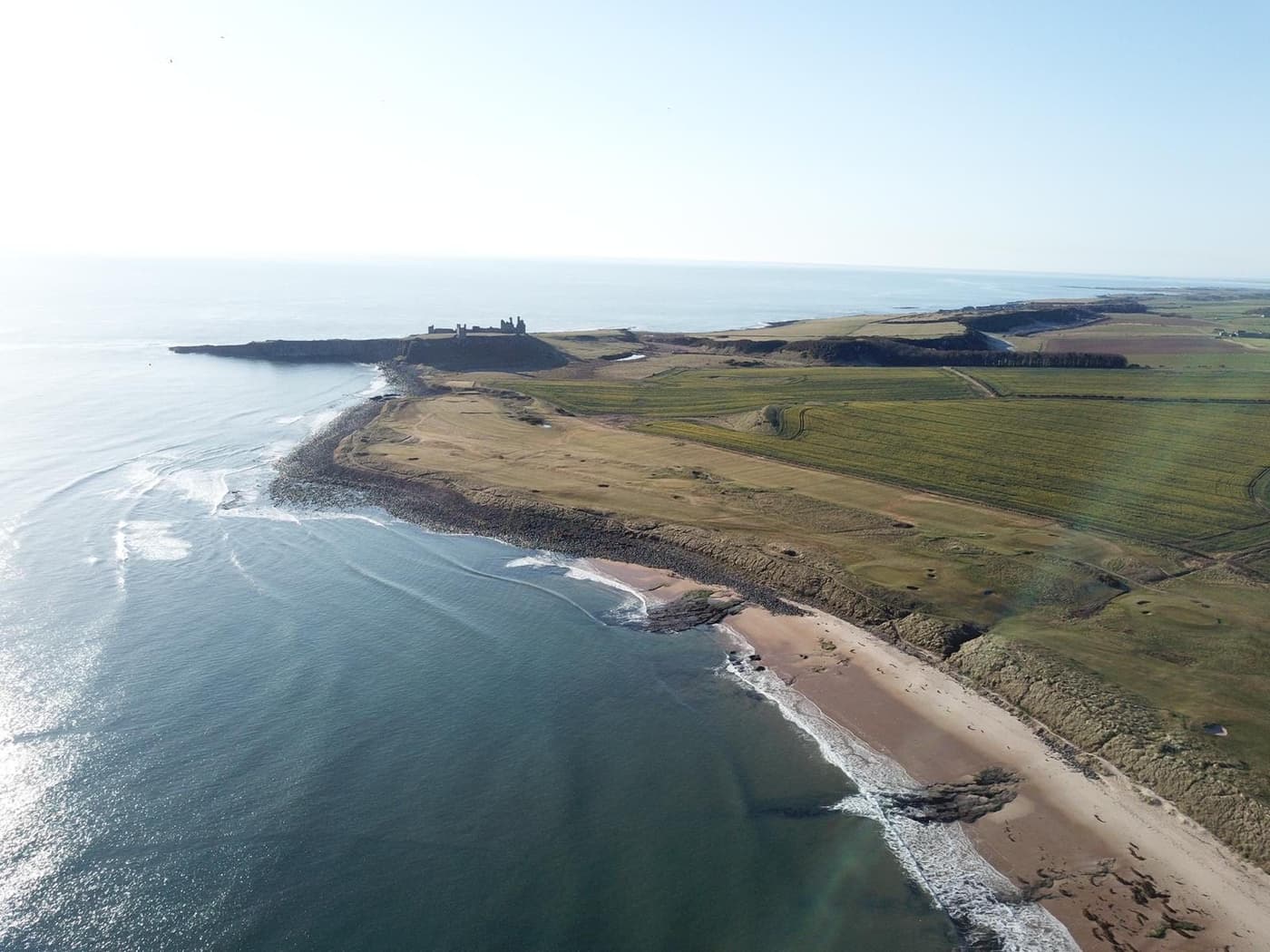
Dunstanburgh Castle
Alnwick, England
- AddressDunstanburgh Castle Golf Club, Embleton, Alnwick NE66 3XQ, UK
The ruins of Dunstanburgh Castle lie on the Northumberland coast, between the villages of Craster and Embleton. Just to the north of this 14th-century fortification sits the self-deprecating 18-hole layout of Dunstanburgh Castle Golf Course, where the fairways run out close to the sandy beach of Embleton Bay.
Owned by the National Trust but maintained by staff at the course, the links has been used for golf since 1900, when a 9-hole layout was first established. The estate was sold to shipping magnate Sir Arthur Munro Sutherland in 1919 and he wasted no time in calling in James Braid the following year to modify the course.


Braid lengthened four holes, shortened four holes and designed a new one. The course was then extended southwards in three stages to a full 18-hole layout: three holes were added by 1929, another three-hole extension was completed two years later before the final three holes were brought into play in 1936.
After Sir Arthur’s death in 1953, the running of the club was handed down to his son, Sir Ivan Sutherland, who gifted the golf course to the National Trust in 1961 while retaining the lease. Sir Ivan’s son, William Sutherland, picks up the story:
“The sea would sparkle beyond as we left the hard tarmac, threw off our shoes and ran into the soft and quite amazing smell of the lush green links. Covered with flowers, harebells, cowslips and ragwort, the place was a feast of coloured butterflies and stripy caterpillars. The old war trenches made magical tunnels through the long marram grass and the golfers were beings from another world, taking part in some strange ritual quite alien to a young child.
These are some of my earliest memories of the place that would do much to shape my future life. For I grew up with Dunstanburgh Golf Course as my second garden and many is the long summer evening I would trudge home up the hill to Dunstan Steads after playing 3 or 4 rounds during the day.”
William became Dunstanburgh's lessee in 1987 and decided it was high time for change.
“So here we had this beautiful links with a course of great charm, but the total length was barely over 5,000 yards. Too many of the holes were less than 300 yards and two of the short holes were very chancy to play. Play was also held up regularly by traffic over the footpaths crossing holes 1 and 7 and holes 10 and 17. I decided to bite the bullet, risking the disappointment of old Dunstanburgh hands, by setting out major changes to the course…
All in all, the changes had created ten new golf holes and brought the course up to date for the modern game. We managed to keep the work of the bulldozers to a minimum so as not to spoil the overall character of the links. We managed to create our new greens by grooming and cutting existing turf. By gradually reducing the height of cut over a period of months we turned areas of fairway into turf for the new greens. The change was remarkable, but it was not a job that could be done overnight. A great deal of thought and hard work went into the changes which have created the course of the present day.”.
Today, there’s only one par three on the front nine, the 166-yard 4th (“Plateau”) which, as its name suggests, plays to a raised green with bunkers protecting the front right and left of the putting surface. The lone par five on the card arrives at the 527-yard 14th (“Crags”), where out of bounds threatens all the way down the left of the fairway.
In the modern era, the course measures 6,263 yards from the back tees and par is rated at 70. Holes 1 to 6 are laid out to the north of the clubhouse with the remaining holes routed further to the south. The two par threes on the back nine at the 13th and 15th are both terrific holes, but then so are all three of the short par fours at holes 5, 7 and 11.
Course Reviews
Leave a Review
This course has not been reviewed.
If you have played this course, consider .
Thanks for the review
Your review has been successfully submitted and will be reviewed for approval.
Course Reviewed
You’ve already submitted a review for this course.
Course Architect
View All
James Braid was born in 1870 in Earlsferry, the adjoining village to Elie in the East Neuk of Fife. He became a member of Earlsferry Thistle aged fifteen and was off scratch by his sixteenth birthday.

